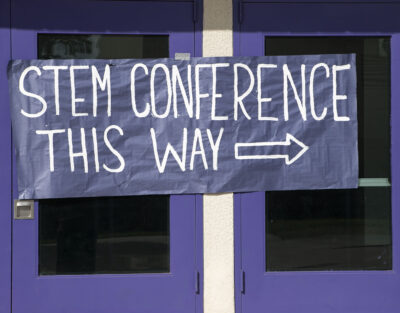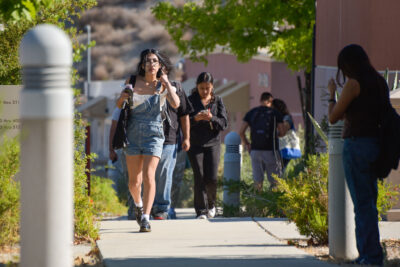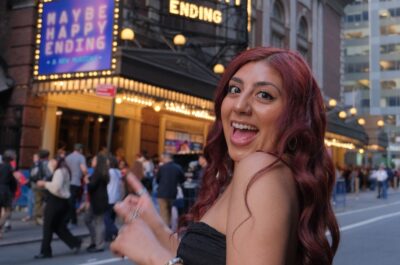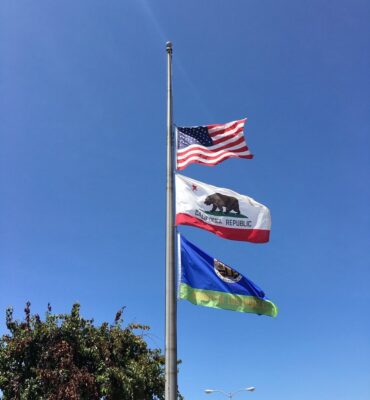No. 11 in a series of 52 commemorating 100-year anniversary of The Signal
Rose Mulholland answered the phone shortly after midnight, March 12, 1928. She told her father the St. Francis Dam had burst. As he walked to the phone, a stunned William Mulholland repeated, over and over and over again: “Please, God. Don’t let people be killed… Please, God, don’t let people be killed…”
A prayer uttered far too late.
The collapse of the St. Francis Dam up San Francisquito Canyon in Saugus is the most horrific and undying story The Mighty Signal has ever covered. Ninety-one years later, the events are relived. Tour buses still drive out to the lonely stretch of San Francisquito Canyon to retrace a monster unleashed.
Two days after the 205-foot concrete dam burst, this newspaper covered the second-worst man-made disaster in California history. The 1906 San Francisco earthquake and fire was the first. It claimed at least 3,000 lives (and some say as many as 10,000 because the city underestimated the death toll). The St. Francis Dam disaster is also the seventh-worst man-made loss of life in American history.
Unraveling the story is like solving a murder mystery, only with 500 corpses. Or less. Or more.
Current figures place the death toll from the old 450 to as many as 631. In our March 14, 1928, issue, The Signal ran the heartbreaking story in an old-fashioned and awkward stacked headline style:

About a year ago, I chatted with an executive from the Department of Water & Power. On the promise of anonymity, he said DWP records showed that only 250 people died in the disaster. Since that tragic day, most records hold that the official death toll was 432, with an asterisk that as many as 631 may have perished.
Remember, this was 1928.
Few carried identification. Many had no home addresses. There was no central information gathering. Corpses and skeletal remains found years and even decades later, from Saugus to Ventura, may have added to the death toll.
What happened?
It started with a giant of a man
Volumes have been penned about the Los Angeles Aqueduct. For years after it was finished in 1913, it was the longest in the world, bringing water from the Owens Valley to Los Angeles, some 223 miles.
William Mulholland, who, according to The Signal, owned a large horse ranch both here and in the San Fernando Valley built the reservoir to supply L.A. with water for two years in case of drought, terrorism or an earthquake damaging the aqueduct.
From 1900 to 1920, L.A.’s population erupted from about 100,000 to nearly 600,000. Water was critical.
Construction of the St. Francis Dam was nothing short of a miracle. The Signal reported preliminary surveying and ground clearance began in 1922, with actual construction starting in August 1924. A small Signal story from March 1, 1926, noted that with the turning of a spigot, water from the Owens Valley began pouring in to fill the reservoir. At 7 million gallons a day, it would fill to capacity in two years.
Danger signs and the first victim
The Signal solemnly noted that in March 1924, the dam claimed its first soul. Young T.O. Schwenssen was working on the project, lost his footing and fell into a surge chamber. That’s a storage chamber downstream used to absorb sudden rises of pressure.

And there would be pressure. The St. Francis Dam, once filled, would hold 56,000 acre-feet of water, or, about 18 billion gallons.
Mr. Schwenseen? They found the construction worker’s bloated body three months later in June of 1924.
Also in the summer of 1924 was the Ruiz-DiRaggio wedding, held under a huge canopy of grapes at the bride’s family ranch. In four years, most of the members of those two Saugus ranching families would die in the dam disaster.
A few years ago, a geological treatise exonerated Mulholland, citing that he did not have the techniques to analyze topography and unwittingly built the monolith on loose soil — atop three active fault lines.
Signal accounts the next few years claimed otherwise.
Signal Editor A.B. Thatcher wrote of ranchers in the area who said they had visited the construction site to warn Mulholland he was building on sketchy ground. Worse, Mulholland added 20 feet to the height of the St. Francis, without any calculations.
On July 8, 1927, Signal silent owner and rural postal carrier W.T. Stonecyper announced he wouldn’t deliver mail to San Francisquito Canyon anymore. Some 500 feet of the mountain road that went up to the dam was sinking — not by inches, but by four feet. Mulholland ignored the issue by simply moving the supply road away from the sinkage.
Adding 20 feet in height to the dam with just a pencil sketch didn’t help the dam’s stability. The day before the dam broke, the water level was just 3 inches below the spillway.
A year before, workers were repairing huge cracks in the dam — using grout.
Days before the break, gallows humor spread among the workers. The ground around the dam was seeping alarming amounts of water. Comments like: “See you later, if the dam don’t break.”
It’s never too late for The Mighty Signal to offer a correction. A possible age-old error was discovered, researching this story.
The day the St. Francis burst, damkeeper Tony Harnischfeger patrolled the face with his 6-year-old son, Coder. For years, we thought Harnischfeger and his wife and children lived in the little cottage below the towering and sleeping beast. According to a Los Angeles Times article of 1928, the woman was actually Harnischfeger’s girlfriend, Leona Johnson.
Hours before the break, the dam itself was hemorrhaging water. An alarmed Harnischfeger called Mulholland at 10:30 a.m. to sound the alarm. The water man inspected the dam with his No. 2 man, Harvey Van Norman.
It looked good to them.
The strangest story
Do remember that one of the most famous movie stars on the planet lived a couple miles below the dam. Harry Carey was in New York City a few days before the St. Francis burst, performing in a Broadway play. Earlier, in the early 1900s, Carey was in the Arizona territory, filming a Western. He made friends with the chief and medicine man of the Navajo tribe who were used as extras in his film. They lived impoverished lives and Carey hired the entire village to move to Saugus and run his ranch. It became a famous Southern California tourist spot, with a motel, trading post and dude ranch.
Stories in this paper recalled local women being “shocked” at the rumor that Navajos could engage in polygamy.
Just days before March 12, Carey got a phone call. It was from the Navajo medicine man. The holy man informed his boss and friend that he had had a dream the previous night of a great disaster. The Navajos would be moving their entire village out of Saugus and back to Arizona. That prophetic dream saved the lives of more than 100 Native Americans.
A few minutes before midnight
In 1993, The Signal interviewed Abigail Riley. Abigail was 94 then. The afternoon of March 12, 1928, she and her family had driven from their Piru house to their home in Saugus. Her husband, Bill, was hysterical. He pointed to waterfalls pouring out of the face of the St. Francis.
“He kept telling me the dam was going to break and I thought he was crazy. I thought, ‘Why would they leave all the houses and people here?’” She got out candles, nonetheless. Abigail had gotten up around midnight to tend to her daughter, whose finger hurt because of a tight ring. No lights. A neighbor banged on the door.
The dam had broken.
“I could hear it off in the distance. It was like a million freight trains letting off steam. Mist fell like soft rain.”
Three minutes shy of midnight, the dam bursts. A 200-foot wall of water slowly breaks through, gathers momentum and rolls at about 18 mph.
Gatekeeper Harnischfeger was found a few days later. At least his legs and hips. According to The Signal, they found the top of his torso in the early 1930s.
At Kemp, a railroad storage depot near Castaic, slept 150 Edison workers in tents. One survivor reported a security guard was checking out rumblings in the distance and saw static bursts of electricity. This was the flood wave gobbling up electrical poles.
By the time the wave hit in Castaic, it was 60 feet tall.
Miraculously, only 84 of the Edison men died. For some, the thick, canvas tents tangled and helped drown the 84. The other 66? The tents, filled with air, were like balloons and helped survivors float to higher ground.
A later story in The Signal reported that a Castaic woman was screaming at her husband. As she and her children sprinted to higher ground in the dark, he had become mesmerized by the approaching roar. She watched as the vanguard of water, higher than a three-story building, washed him to perdition.
Herds of cattle, horses, houses, people, trees, cement barriers and boulders, some weighing 10,000 tons-plus, all washed down toward the Pacific Ocean.
Some 1,200 homes — lost. Hundreds of people — dead.
Thousands of livestock and animals. Dead. Thousands of acres of rich farmland — devastated, covered with yards of sand, boulders and debris.
It took 5.5 hours for the last bit of mud to drain into the Pacific.
In all my research over the years, the most horrific anecdote was reported later by editor Thatcher. He wrote of reports from fishermen off the Oxnard/Ventura coast of witnessing hundreds and hundreds of sharks in a massive frenzy, feeding off the corpses of livestock, wildlife and humans. Bodies would be found washed up as far away as Mexico.
Mud zombies
Nearly every newspaper in America the next few days carried the story of the St. Francis Dam disaster. Many falsely reported the Little Santa Clara River Valley had become a modern Atlantis, lost and completely submerged in water.
Thousands of army, police and volunteers rushed to the SCV to help. Dozens more came to loot. The Army was called in to guard homes and set up roadblocks. A few looters were reported shot at.
Silent film star William S. Hart rode around town on horseback, helping out. He sobbed when he found a young boy, dead. Hart wrapped him in a little cowboy suit for his burial at what would later be known as the Chinese Graveyard up San Francisquito.
Bodies were wrapped in sheets and blankets and stored at various local buildings. Our community center was the old Hap-A-Land Hall, where the old Courthouse Building on Market Street is today. It became the epicenter morgue. Dozens and dozens of bodies were lined up. DWP completely restored the Hap-A-Land, to no avail. Previously a scene of laughter, gaiety and community identity, no party or event was ever held there after that.
The day of March 13, 1928, was surreal. Mud zombies wandered through Saugus and Newhall. Survivors, stunned, disoriented, clothes completely torn off and caked with mud, walked around in a daze.

One long-forgotten tidbit from that day concerned Ed Adkins. The Signal noted Adkins had the unpleasant task of collecting dozens of corpses from the dam disaster. Adkins balanced bodies high atop one another, stacked them onto his Model A Ford and drove them to the Hap-A-Land. His friends noted Ed had a pretty strong constitution. He had been in China during the Boxer Rebellion and had personally witnessed hundreds of beheadings.
In our March 14, 1928, issue, we printed a partial list of the victims. To this day, it’s heartbreaking. C.J. Mathews, 2 years. Dead. Roland Errachuo, 14 months. Dead. Three children of Mrs. Ray Rising. Dead. Eugene Kennedy, infant. Dead. Eight children of Mrs. Carillo. On and on and on. It’s hard to imagine. The death toll today might be in the tens of thousands.
Even in epic tragedy, a small flower of lightness can be found. About 30 years ago, at Jack in the Box, I had coffee with an SCV icon, Bailey Haskell. His family goes back to the 1800s here and as a young man, had worked on the dam. Bailey’s job was to pilot around the lake in a rowboat, scouring for debris. The morning after the break, he was looking for survivors. Way up an oak tree was a young girl, just entering womanhood. She was stark, raving naked, in shock and shivering.
Haskell got a big wooden ladder, climbed up the tree, threw a wool blanket over the teen and carried her fireman’s style down to the ground.
“Funny thing?” Bailes told me. “Since then, I see that woman in town, maybe three-four times a week. For 60 years, she never said a word to me. Never had a thank-you or hello. I’m guessing to this day, she was embarrassed about me carting her buck naked down from that oak.”
Our propensity to be sadly human
The mood in the Little Santa Clara River Valley ranged from sadness to extreme anger. Many locals wanted Mulholland tried for murder. Mulholland was never the same after that. He postured, at first, suggesting terrorists. After the break, thousands of dead fish were found in deep pools along the canyon. Some thought dynamite was the cause. An Army report in the 1940s noted that to kill all those fish, some 12,000 pounds of TNT would be needed. The fish died of silt poisoning.
Much, much later, engineers said the technology wasn’t available in the 1920s to detect the dam’s design flaw. There was no science available in 1922 to tell Mulholland there used to be a lake exactly where the St. Francis was built 100,000 years earlier. It burst its banks after a paleolithic landslide, sending an earlier flood through the Santa Clarita, sending sabertooth tigers and wooly mammoths careening to the Pacific.
However, The Signal reported ranchers warning Mulholland he was building this monolith on dangerous and unstable ground. Plus, he added 20 feet to the dam’s height, which later was blamed for creating the very forces that destroyed the concrete wall — up-thrusting. That can occur when the water reaches 7 feet from the top of the dam. Remember the water level at 3 inches?

A sorrowful Mulholland testified at the Coroner’s inquest that he “… only envied those who were killed.”
William Mulholland went on to say: “Don’t blame anyone else, you just fasten it on me. If there was an error in human judgment, I was the human.”
A broken man, he retired eight months after the St. Francis failure and lived in seclusion until his death in 1935.
Back in the SCV, we continued our human dance, loving and profane. The Signal ran ads for Newhall Pharmacy, which was selling disaster memorabilia. I quote from an ad, two weeks after the tragedy: “Large assortment of dam photos; come in; and see them. Those flood pictures are going fast, better hurry!”
John Boston is the local historian, author and columnist for The Mighty Signal.












